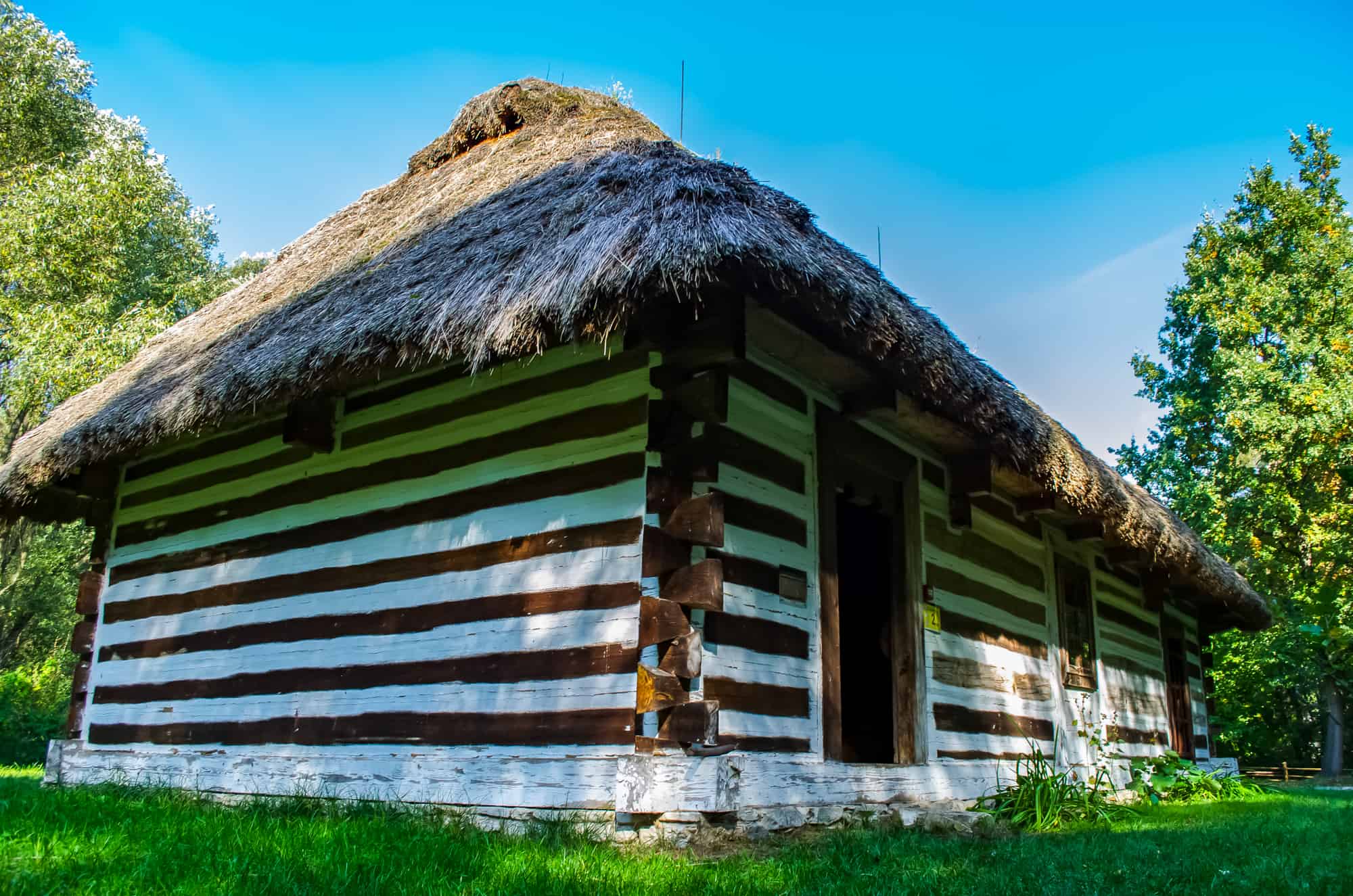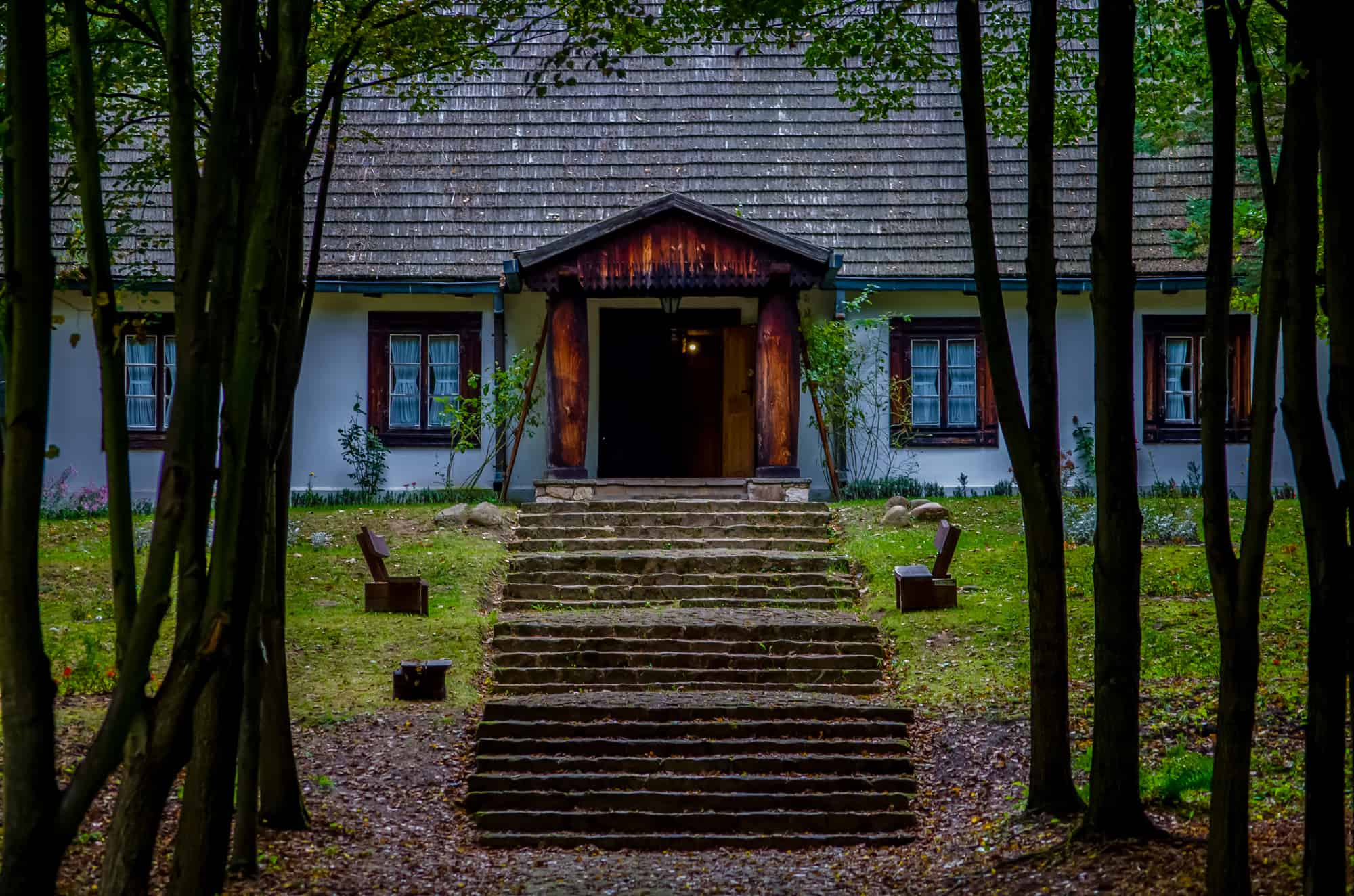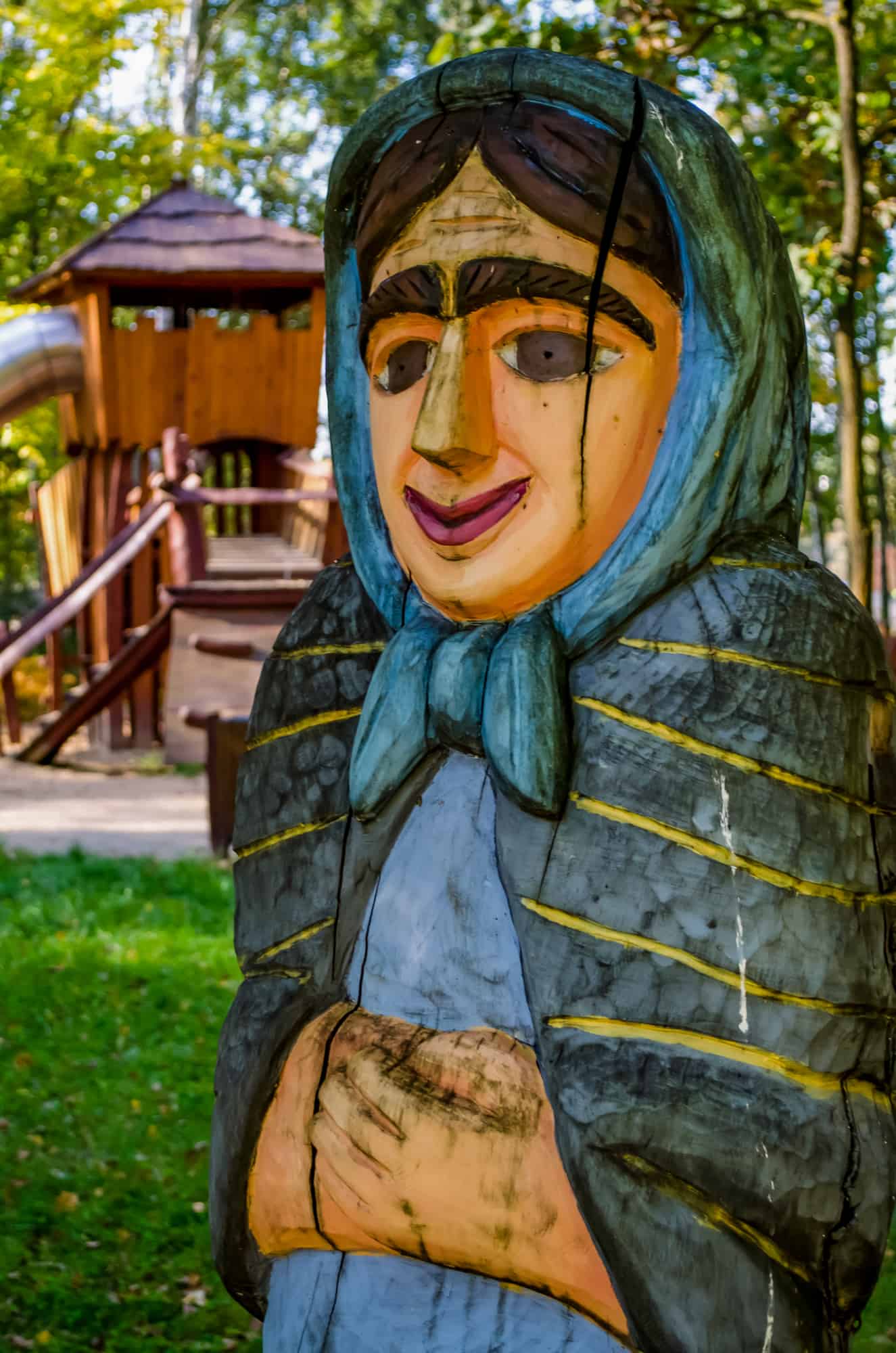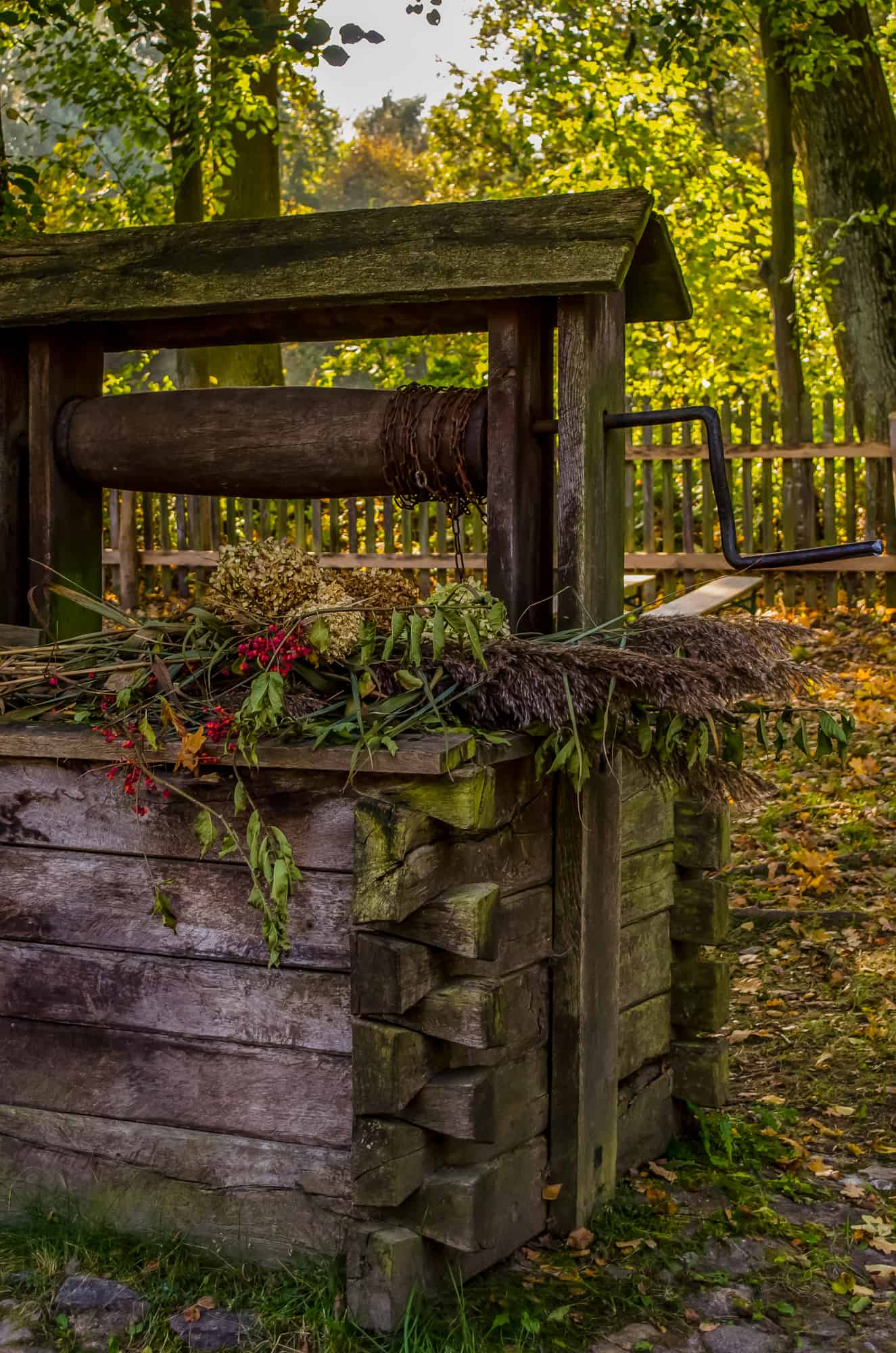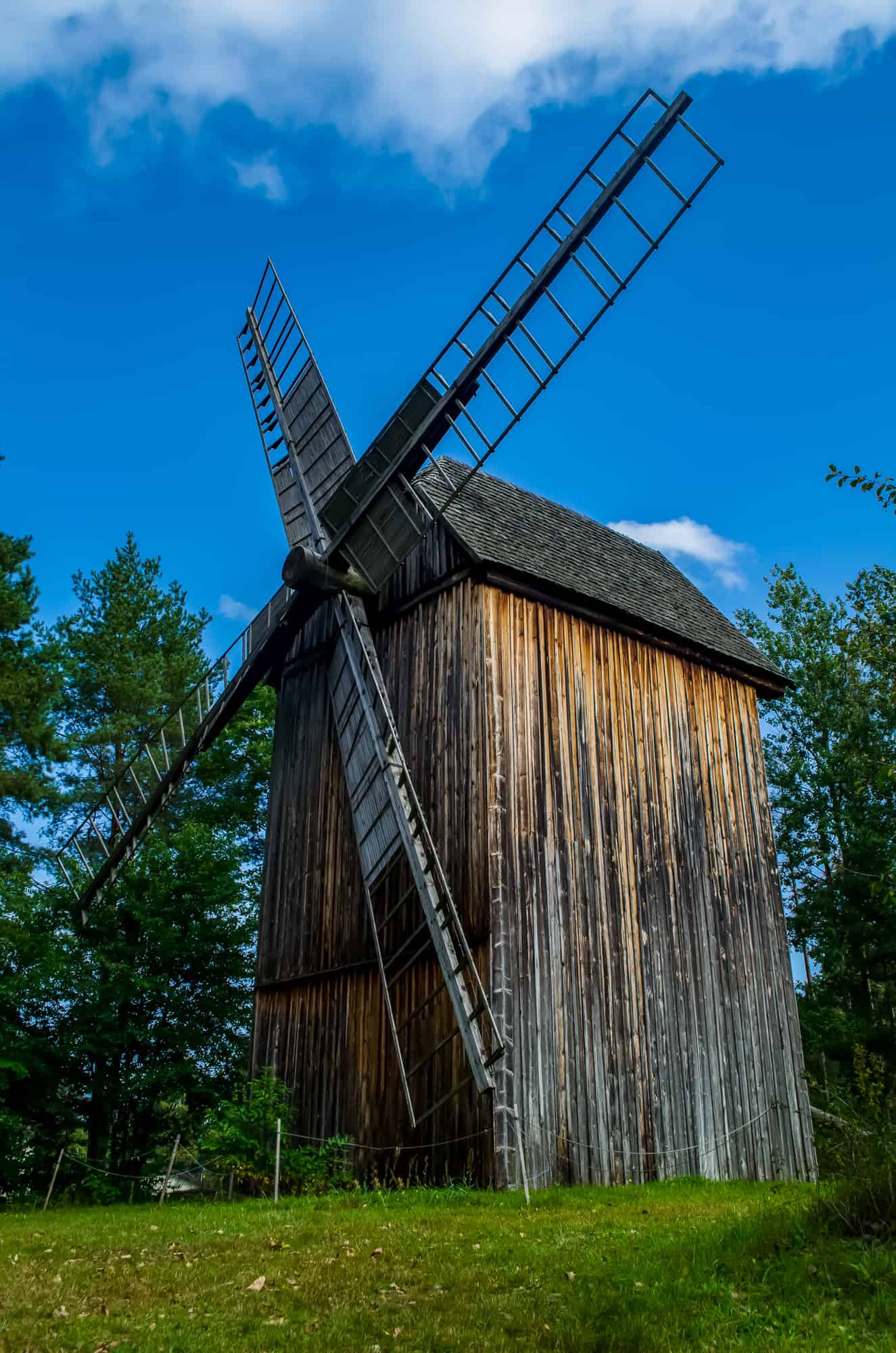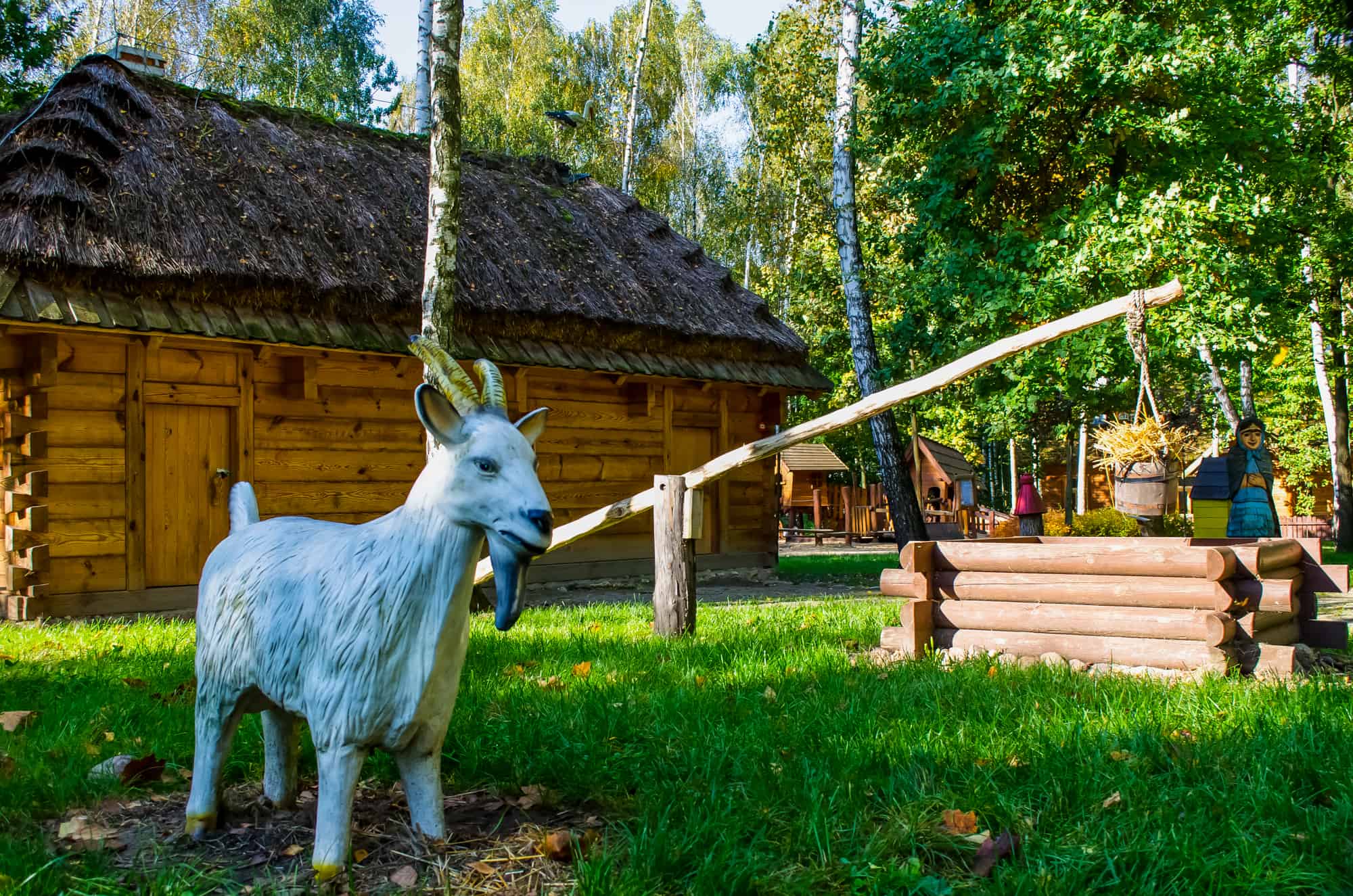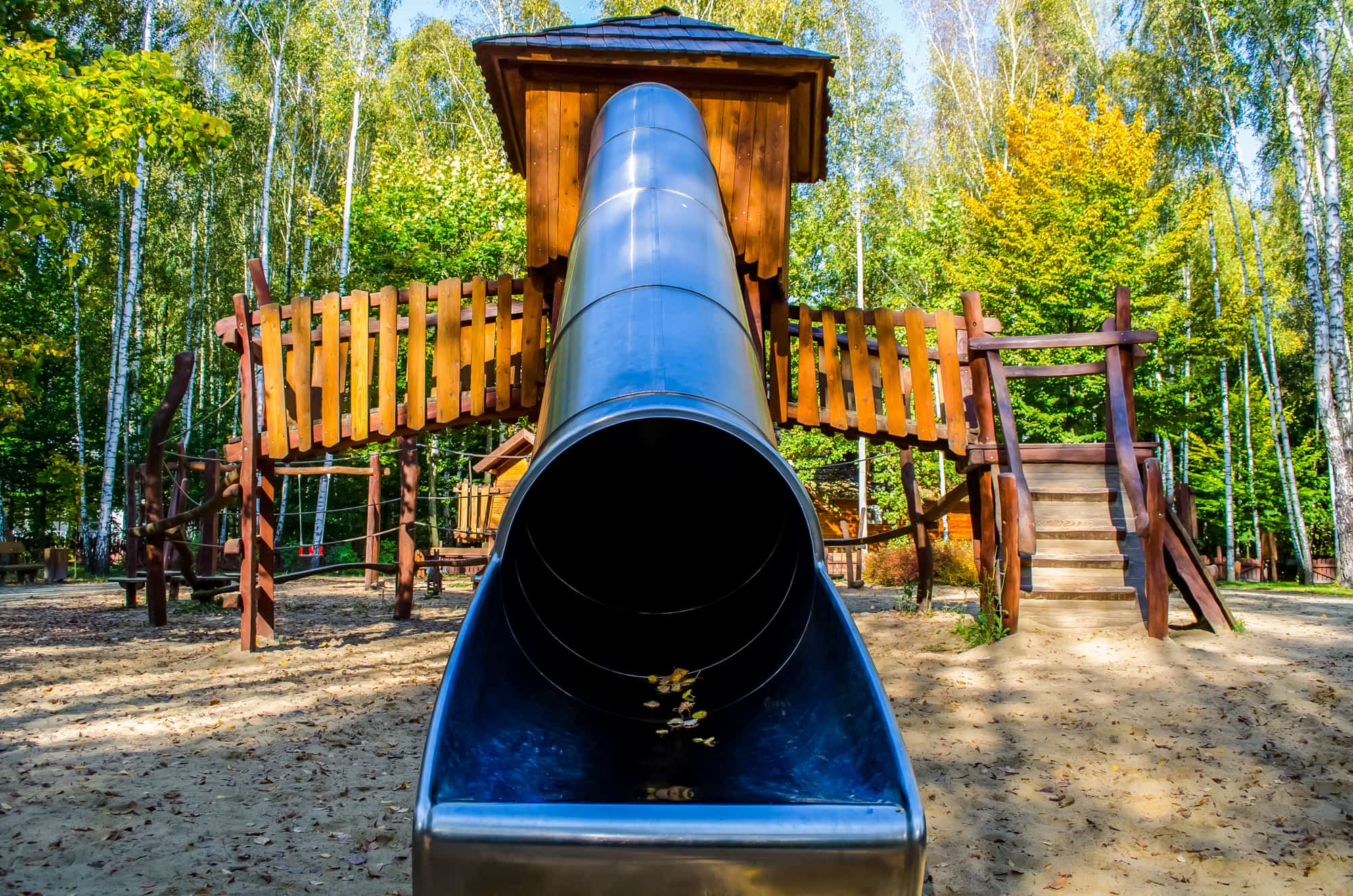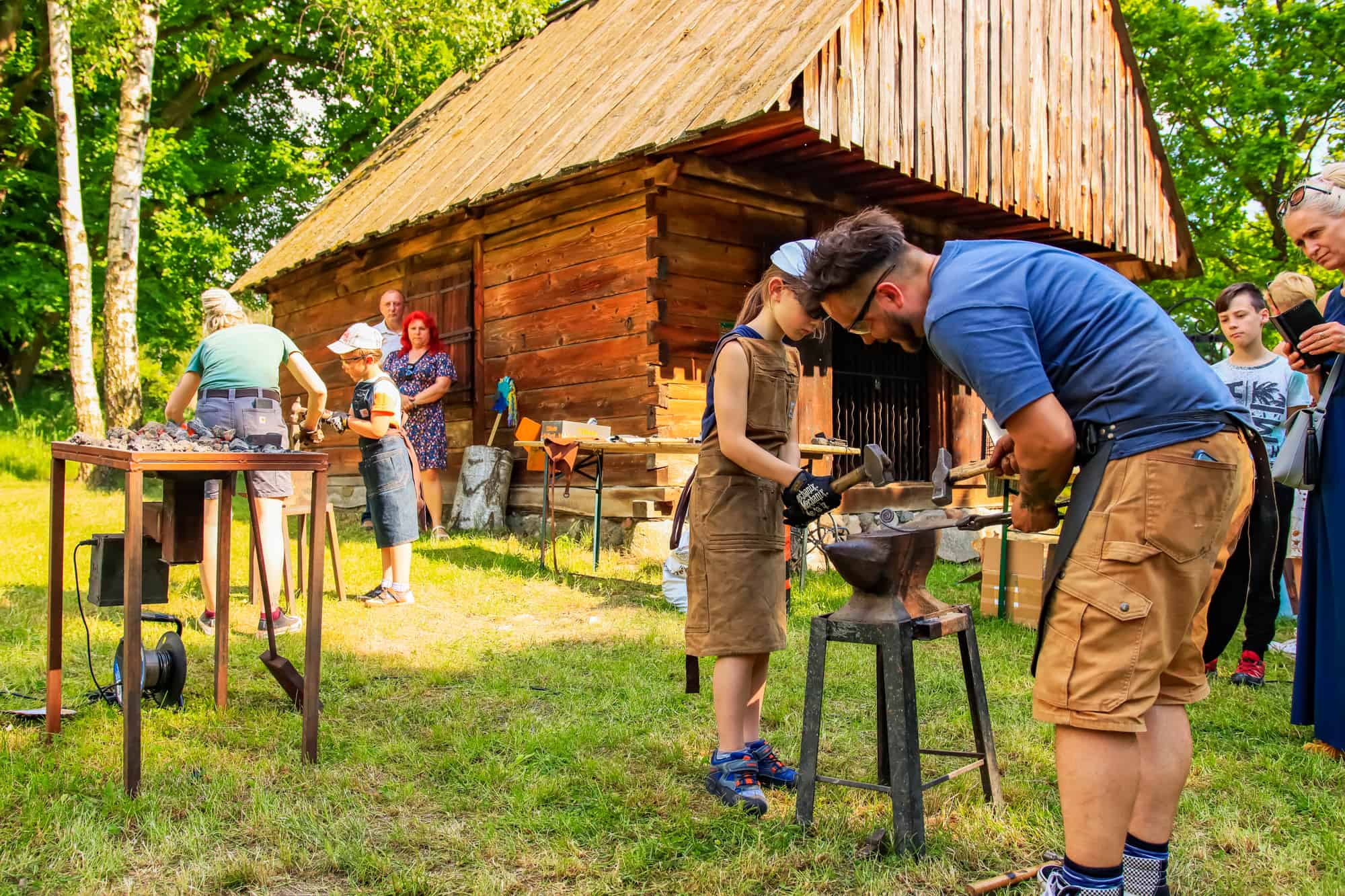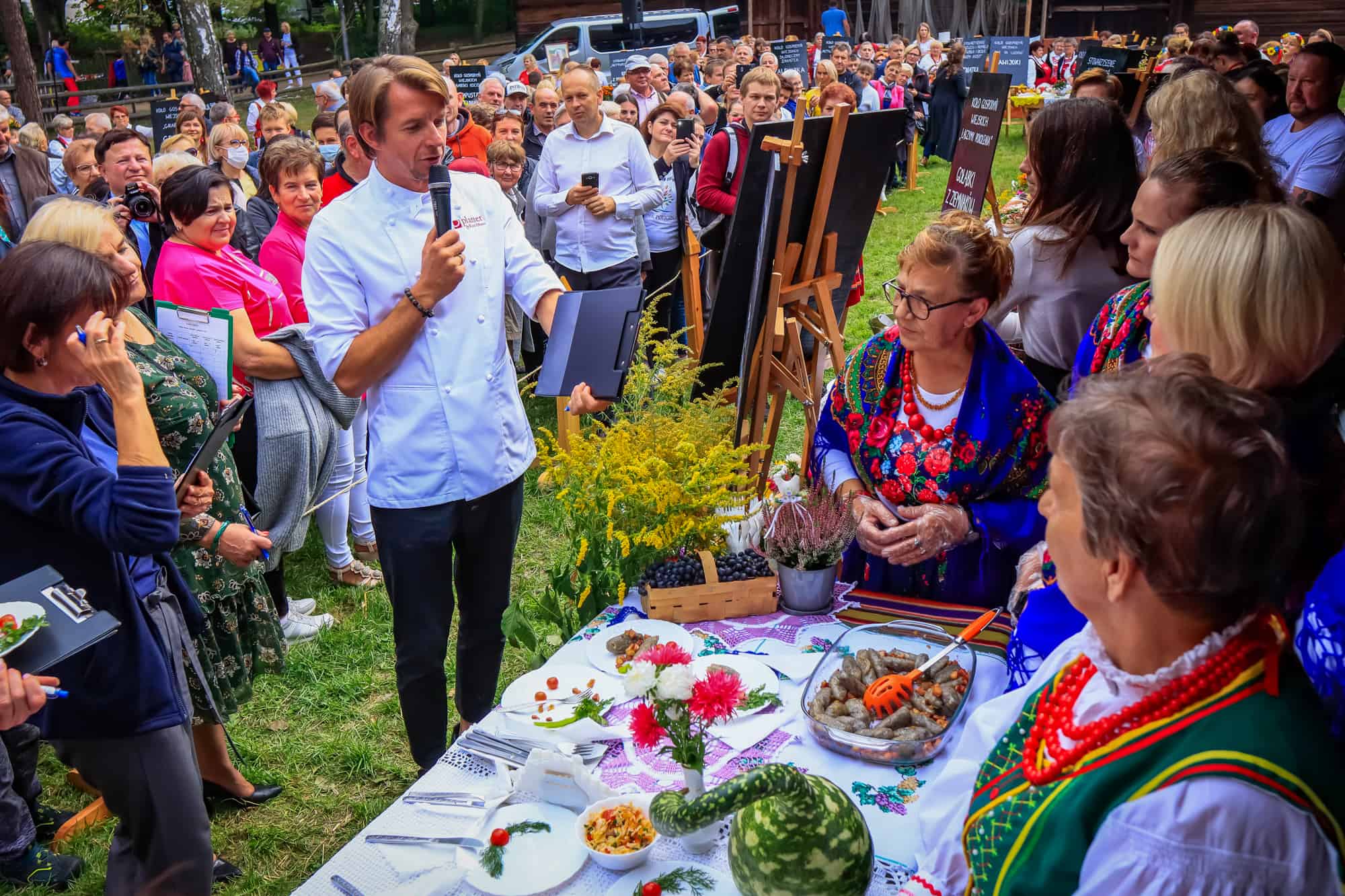FEEL THE FOLKLORE
Radom Village Museum
Reserve at least a half of a day to visit the Radom Village Museum. It is a large area of 32 ha with over 80 examples of folklore architecture. The Radom open-air ethnographic museum collected structures and objects from the neighbourhood of Radom. While walking in the museum, you will easily feel the atmosphere of Radom villages of previous centuries.
It is worth visiting the ethnographic museum with a guide, who will present many titbits and the history of buildings and, first of all, show things that seem imperceptible at first glance. If you prefer, however, walking on your own, you can plan your trip without problem. At each exhibit there is an information board and the most important facts about each spot are published in the mobile application.
“Life” in the museum revolves around village life. Apart from homesteads, houses and chambers, you will also see windmills, manor houses, sacred facilities and even a wooden firehouse! You must also pay attention to the oldest structure in the museum: the St Dorothy from Wolanów Church, which is extremely precious due to its illusionistic polychromy.
While walking in the open-air museum, you will also observe the environment where it is located. The Museum is located in the Protected Landscape Area of the Kosówki Valley with rare species of plants, insects and amphibians. In the reserve there is also an educational route. The place (both the museum and its surroundings) is extremely picturesque. Thus, it is not surprising that it was used as a film set of many films, TV series and video clips.
The expedition to the Radom Village Museum will be fun for the youngest visitors, as well. The homestead with hens, geese and Radomir the goat is an obligatory point that each child visiting this ethnographic museum must reach. For sure, a playground located just at the museum entrance will not escape the kids’ notice.
While planning your trip to this special place, it is worth checking whether there is something extraordinary taking place there. The calendar of events and workshops is very rich and participation in any of them will be unforgettable. The Museum organises the Palm Sunday, the Midsummer Night’s celebration, and the Potato Festival. Workshops during which you can learn, for example, to whip butter, mould pots or grind millet are also attractive.
